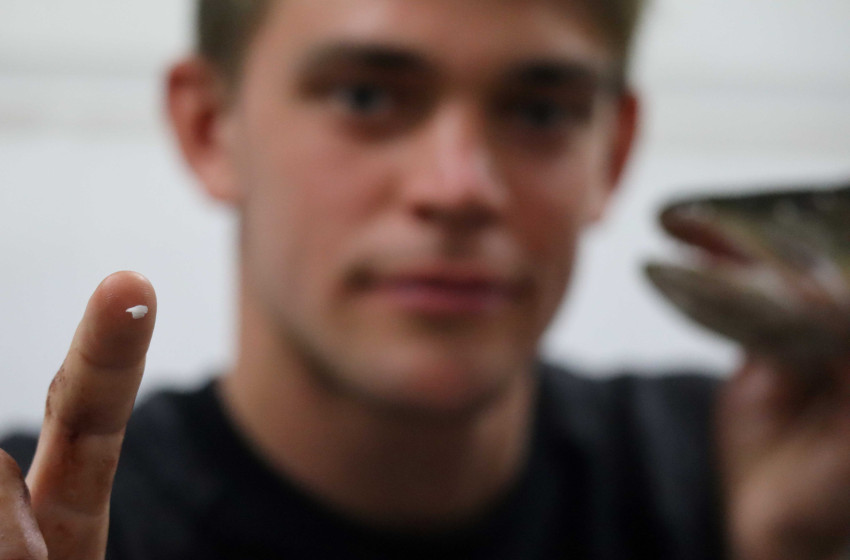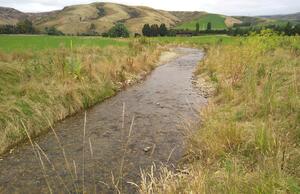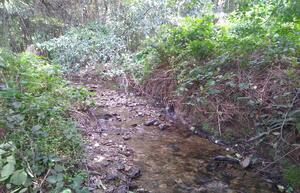Key trout spawning streams identified in lower Clutha River/Mata-au
- 10/07/2023

Pictured: Master’s student Olivier Raven, from Wageningen University in the Netherlands, inspects an otolith extracted from a brown trout caught in the Pomahaka River. Photo: Bruce Quirey
Crucial spawning tributaries have been identified in the lower Clutha River/Mata-au catchment after a four-year research project collecting and analysing brown trout.
The Brown Trout Origin Project analysed the otoliths (or ear bones) of juvenile and adult trout collected from around the catchment by Fish & Game and anglers.
The catchment extends from below Roxburgh Dam to the sea, including historically renowned trout rivers such as the Pomahaka and Waipahi.
Otolith research was completed at the University of Otago using a precise laser and mass spectrometer. The analysis was done this year by Olivier Raven, a visiting Master's student from Wageningen University in the Netherlands.
“To best manage the fishery and ensure sustainability, understanding the migratory patterns of brown trout is crucial,” Mr Raven says.
“We identified the birthplaces of adult trout caught by anglers in locations often significant distances from where the fish had originated.”
 Left: Benger Burn is one of several crucial spawning streams identified in lower Clutha River/Mata-au catchment. Photo: Otago Fish & Game
Left: Benger Burn is one of several crucial spawning streams identified in lower Clutha River/Mata-au catchment. Photo: Otago Fish & Game
The research compared the chemical composition of juvenile otoliths with the core of adult otoliths, which developed during their time in spawning streams. The project was able to confidently determine the spawning stream for 71 out of almost 200 adult fish tested.
These crucial spawning streams in the upper section of the lower Clutha were identified as Benger Burn, Heriot Burn, Coal Creek, Crookston Burn, Carsons Creek, and Jimmy's Creek.
“A next step will be to make protection of these streams a priority,” Mr Raven said. “Further analysis of the streams may provide valuable insights and strategies for enhancing other tributaries.”
The project was funded by Contact Energy as part of mitigation for the Clutha hydro-electrical dam scheme.

Right: Olivier Raven says further analysis of the streams may provide valuable insights and strategies for enhancing other tributaries. Photo: Bruce Quirey
Professor Gerry Closs, from the department of zoology at the University of Otago, said he was pleased the otolith trace element project had helped identify key tributaries supplying juvenile trout into the downstream Clutha trout fishery.
“Knowing which tributaries supply the most recruits assists Fish & Game with protection and enhancement of key spawning reaches and gravels in these streams, and improves understanding of how brown trout migrate and disperse through the extensive Clutha River catchment.”
 Jimmys Creek is another important natal stream in the catchment. Photo: Otago Fish & Game
Jimmys Creek is another important natal stream in the catchment. Photo: Otago Fish & Game